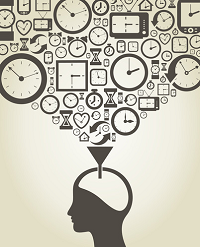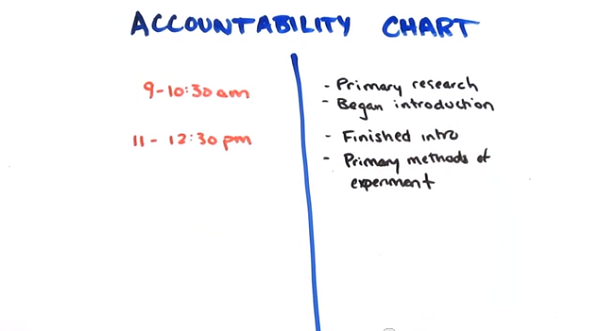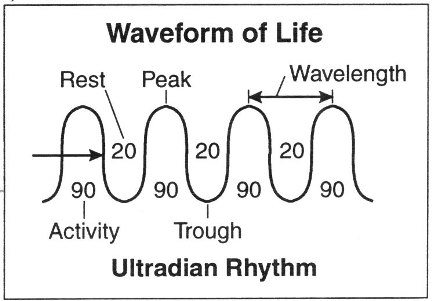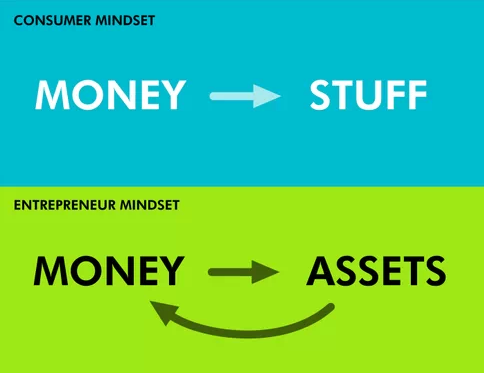Time is money.
It’s an idiom that’s never been more true than for the self-employed, and freelancers everywhere know the importance of managing their time and keeping billable hours optimized.
The problem with advice on productivity today is that too much emphasis is placed on trying out the latest shiny app instead of examining human behavior and seeing why we are struggling with getting things done.
Since those of us who work from home (or co-op spaces) have to be our own boss and rely on our own disciplinary schedule, today I thought we’d take a look at some tried and true methods of getting things done the smart way.
Let’s jump in…
1.) Create a To NOT Do List
Perhaps one of the best productivity tips I’ve ever received has nothing to do with getting things done at all!
Rather, creating a to-not-do list is a simple way to remind yourself of the things that you frequently resort to in order to avoid the real work that moves your business forward.
What I do is make a simple list of “busy work” tasks that I know feel like work, but that I recognize aren’t actually moving me towards my financial goals.
Here’s just a sample from my list:
- Do NOT check Google Analytics more than once a day (I’m addicted!)
- Do NOT look at email more than once a day
- Do NOT work on anything for longer than 1 hour in a row (I find my focus dips after an hour)
- Do NOT get on Reddit at all until 6pm
There are plenty more, and you will almost certainly have quite a different list from me, but creating one and making it “real” by putting it down on paper goes a long way in helping you avoid these time-sucking tasks that parade themselves as ‘work’ (we’re on to you!).
2.) Batching
Speaking of tasks like those mentioned above, some things that we must do in our day become quite blurry in their distinction—in other words, you’ll find yourself saying, “Well, I do have to do this, but it’s not a priority task that moves me forward…”
For someone like me, the task of checking analytics definitely falls under this gray area. I do need to check my site statistics to see if there were any traffic fluctuations or big features, but giving myself access to check it at will creates the problem outlined above.
The solution: a process known as BATCHING.
First popularized by the book Getting Things Done, batch processing is the act of doing a single task all at once, and “banning” yourself from doing the task at other times in the day.
For instance, my Google Analytics batch is after lunch (always), and I have 20 minutes to knock out everything—checking stats, setting goals, etc. After I’m done, even if I get that itch to see some pretty charts later in the day, I don’t let myself login. That “batch” of that work has been done and it is easier (mentally) to set that task aside and not worry about it again.
Or, I’ll allow myself about 30 minutes every morning to complete any proposal I need to send out (like this website worksheet). That way I can get it out early and not worry about it for the rest of the day.
One way that batching can benefit most people is with email. We oftentimes spend so much of our lives in our inbox that it’s quite scary. Instead, give yourself plenty of time to respond to emails, network, etc, but only in a single “batch,” such as for 1 hour at the end of the day.
If a task is so urgent that it must be done multiple times, you can set up multiple batches, but don’t get too greedy or you’ll end up ruining the system. For instance, if you get a lot of support emails, batch in 1-3 slots per day, but only let yourself use email during those times.
Switching off between tasks kills your productivity and focus, and batching helps you alleviate part of the problem by removing the “whenever you feel like it” element of accessing busy work.
3.) Embrace Single-Tasking
Multi-tasking is a staunch enemy of productivity.
I’ve discussed before how multiple studies have shown that doing multiple things at once will ensure that you do none of them well—in a research study by Zhen Wang, he was able to show that multi-taskers often feel more “emotionally satisfied” by their work, but are far less productive than those who focus on one thing at a time.
Worse yet, Stanford researcher Clifford Nass examined the work patterns of multi-taskers and analyzed their ability to:
- Filter information
- Switch between tasks
- Maintain a high working memory
…and found that they were terrible at all 3!
According to Nass:
“We were absolutely shocked. We all lost our bets. It turns out multitaskers are terrible at every aspect of multitasking.”
So what can you do?
There are a few things I recommend…
- Plan the night before to hit the ground running
- Use a to-do list that won’t overwhelm you
- Kill distraction
For the first, you need to envision your morning routine—do you often spend time trying to figure out what you should be doing? That’s time wasted, and at the end of the day, money wasted.
Instead, plan out 3 big tasks the night before so you can hit the ground running the next morning.
For the second, though I recommend tools like TeuxDeux to plan out your overall task list, it’s often beneficial to hide tasks from yourself until it’s time to start them, as looking at a long checklist can be quite intimidating.
You’ll find tools like NowDoThis quite useful in this regard, as it lets you queue up an extended to-do list, but you can only see one task at a time.
For the third, especially if you are working online, you need to kill distracting elements that may lead you away from those billable hours.
As a Chrome user (and a Pomodoro Technique fanatic), I’ve found the following extensions really useful:
- Strict Workflow (blocks out selected web pages during 25-minute work sessions)
- StayFocusd (set time limits for certain websites)
- Controlled multi-tab browsing (select the amount of tabs you can have open)
There are usually equivalent extensions for Firefox as well, and often many online versions such as Focus Booster for those interested in the Pomodoro Technique.
4.) Use an Accountability Chart
I can actually take credit for this one! It’s a technique I’ve discussed before on Sparring Mind and it has been insanely useful in keeping myself (and my readers) disciplined and focused.
To easily implement one into your daily routine, simply create two-columns on a piece of paper, Google Docs spreadsheet, or even a whiteboard.
- Column 1 will list the time-span of one of your productivity sessions.
- Column 2 will list what tasks you’ve accomplished in that limited time-span.
Though I tend to work in split 90 minute blocks (25 minutes of work, 5 minute breaks), you can adjust the timescales to whatever works best for you—perhaps you find it easier to sit for a full hour before taking a break when you get in a productive groove.
Either way, the benefit of this sort of chart is that it’s hard to justify a 1-hour downward spiral on YouTube if you have to write it down at the end of your session.
The commitment to writing down what you’ve done keeps you realistic and sparks a desire to avoid time sucks.
5.) Better Energy Management
If Person A works 7 hours in a day and Person B works 9, that doesn’t automatically mean that Person B got more work done.
One common misconception about productivity is this belief that more hours at your desk means you were more productive. If we are honest with ourselves, it’s easy to see that is not the case.
Our best work happens when we are in the zone. We get much more done when we feel energized.
So why are we always trying to manage our productive output? We should be trying to manage the source instead—our energy.
Tony Schwartz, founder of The Energy Project and author of numerous articles, papers, and case studies on energy management (including this one on the Harvard Business Review) claims that our ability to push ourselves to “90% output” is our key to productivity.
In essence, Schwartz says that without energy management, we are prone to internal sabotage, trying to ‘pace ourselves’ throughout the day so that we don’t stop working. Instead, Scwhartz proposes that we should plan total breaks from work so that we can give our all during work sessions without having to worry about ‘pacing’, as there is no need to pace yourself if you know a break is only 45 minutes away.
He often cites research on ultradian rhythms by Peretz Lavie, as seen below:
You’ll notice that it is startlingly close to the Pomodoro Technique, just in longer increments (90/20 vs. 25/5).
The overall lesson is that planning breaks throughout your day allows you to stop the mental restriction of ‘pacing’ and instead work tirelessly for blocks of time with the knowledge that you have a break to recharge yourself coming just around the corner.
This process is often benefited by a longer break (and a nap) in the afternoon, when our energy levels tend to dip:
6.) Paying to Save Time
Sometimes it makes sense to trade some additional money to save some precious hours in return.
If you’re commanding a respectable freelance rate, this becomes even more important as your time is highly valued.
While each of our professions (design, content, web dev, etc.) have programs that can save time during our actual work, there are a variety of paid apps out there that are well worth the investment for that ‘other‘ stuff that makes up our day.
Here’s a few that may help you…
- Legal docs: LegalZoom
- Email: Yesware / SaneBox
- Invoicing: Ballpark / Freshbooks
- Proposals: Bidsketch
- Accounting: LessAccounting
Yes, Google has a ton of free apps that can get you by for a while, but don’t let a stingy attitude hold you back from growing your business.
Remember that self-employed people have to have a different state of mind in order to succeed:
7.) Create Daily Rituals
Rituals, as strange as they may seem to outsiders, are actually quite beneficial for performance and productive output.
According to research covered in Scientific American:
Recent research suggests that rituals may be more rational than they appear. Why? Because even simple rituals can be extremely effective… these findings are consistent with research in sport psychology demonstrating the performance benefits of pre-performance routines, from improving attention and execution to increasing emotional stability and confidence.
In a nutshell, rituals help us compose ourselves and make difficult processes easier because we can start on auto-pilot.
As an example, Joel Gascoigne, founder of Buffer, wrote about why he formed a sleep ritual and why it helped.
Although Joe’s post is his opinion, it matches up with research on the Stimulus Control Theory, which explains why rituals seem to have an impact—they create contextual triggers which help guide our behavior. For instance, the research suggests that you should never use your bed for anything but sleeping (no reading or lounging) and should only lay down in it when you are ready to sleep, because it helps your brain trigger an automatic reaction, due to the familiarity of the ritual.
This method is based on the idea that we are like Pavlov’s drooling dog. We attach certain stimuli in the environment to certain thoughts and behaviors.
Try creating rituals for important parts of your day, such as: when you wake up, during your afternoon break, or when it’s time to wind down and stop working.
Your Turn!
As someone who is self-employed, what are some of your favorite tips for staying productive and disciplined during your work hours?
Share them in the comments below!





